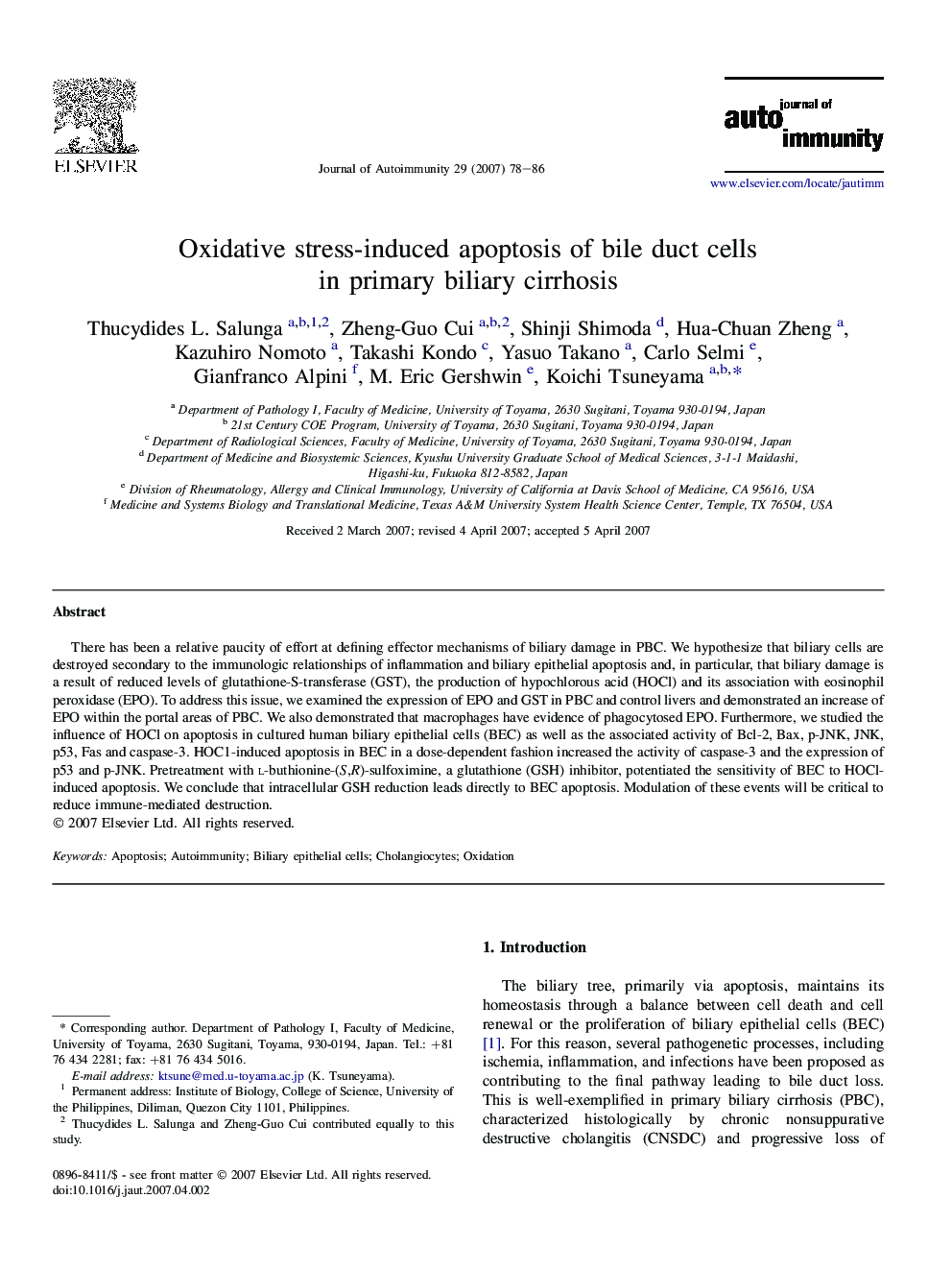| Article ID | Journal | Published Year | Pages | File Type |
|---|---|---|---|---|
| 3368500 | Journal of Autoimmunity | 2007 | 9 Pages |
There has been a relative paucity of effort at defining effector mechanisms of biliary damage in PBC. We hypothesize that biliary cells are destroyed secondary to the immunologic relationships of inflammation and biliary epithelial apoptosis and, in particular, that biliary damage is a result of reduced levels of glutathione-S-transferase (GST), the production of hypochlorous acid (HOCl) and its association with eosinophil peroxidase (EPO). To address this issue, we examined the expression of EPO and GST in PBC and control livers and demonstrated an increase of EPO within the portal areas of PBC. We also demonstrated that macrophages have evidence of phagocytosed EPO. Furthermore, we studied the influence of HOCl on apoptosis in cultured human biliary epithelial cells (BEC) as well as the associated activity of Bcl-2, Bax, p-JNK, JNK, p53, Fas and caspase-3. HOC1-induced apoptosis in BEC in a dose-dependent fashion increased the activity of caspase-3 and the expression of p53 and p-JNK. Pretreatment with l-buthionine-(S,R)-sulfoximine, a glutathione (GSH) inhibitor, potentiated the sensitivity of BEC to HOCl-induced apoptosis. We conclude that intracellular GSH reduction leads directly to BEC apoptosis. Modulation of these events will be critical to reduce immune-mediated destruction.
